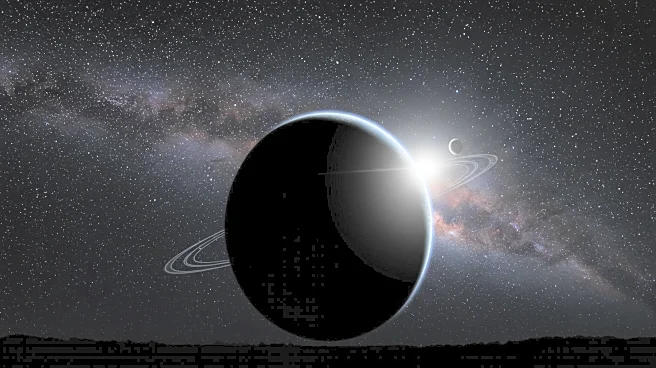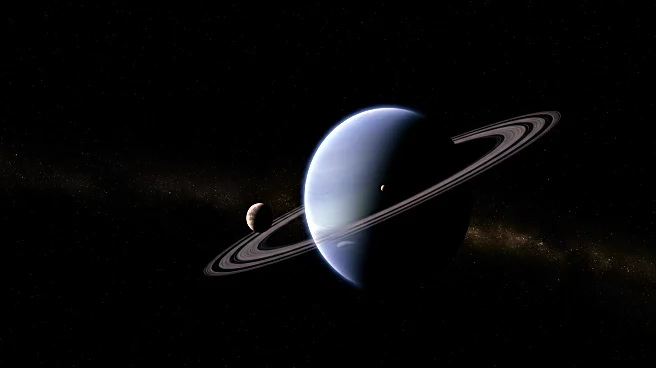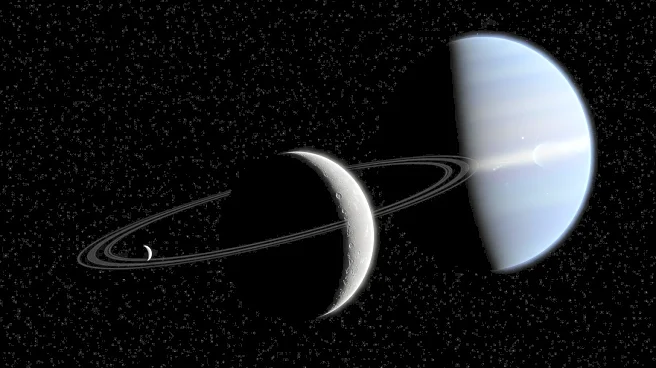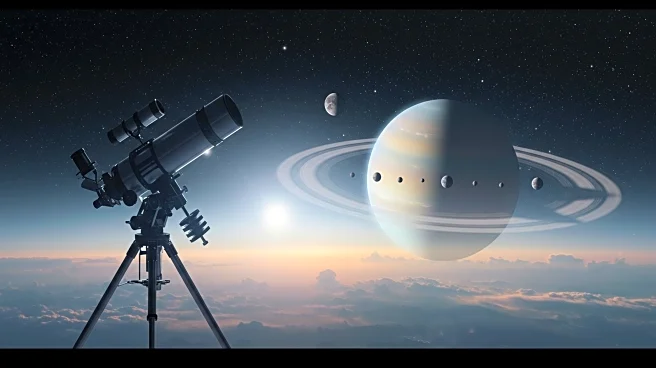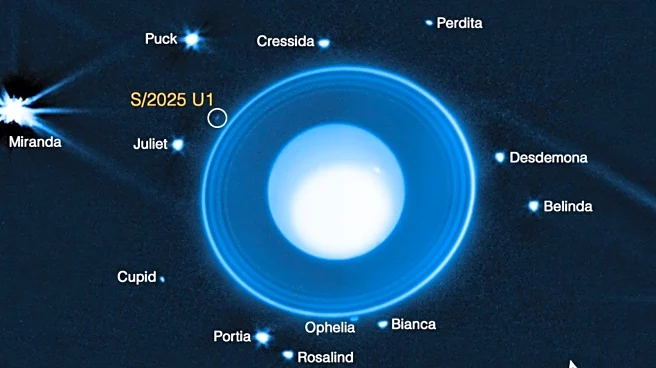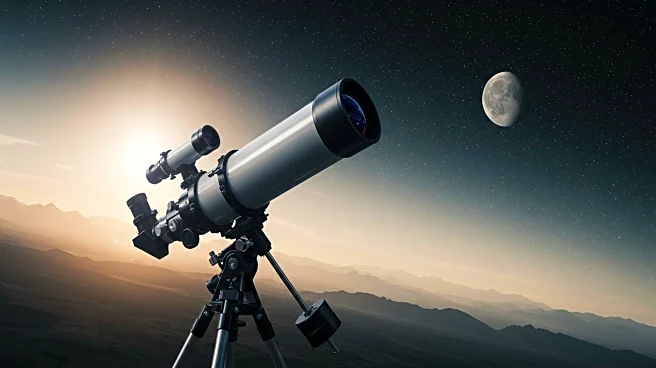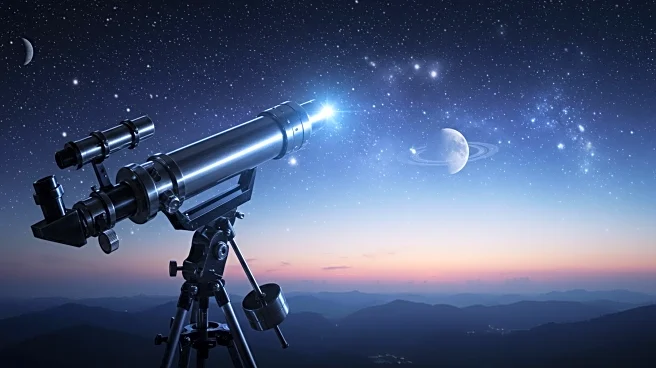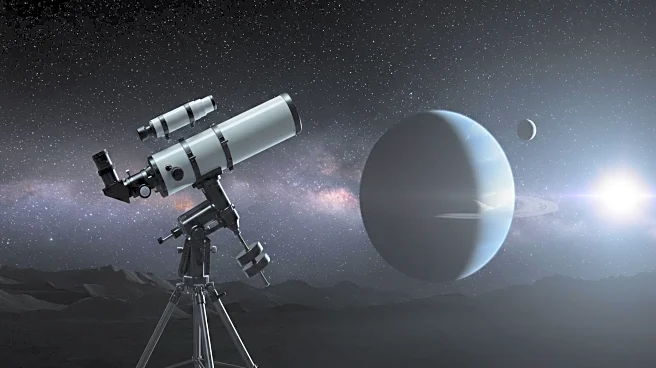What is the story about?
What's Happening?
The James Webb Space Telescope (JWST) has discovered a new moon orbiting Uranus, provisionally named S/2025 U1. This discovery increases the number of known moons around Uranus to 29. The moon is small, with a diameter estimated between 8 to 10 kilometers, and orbits Uranus every 9.6 hours at a distance of approximately 34,950 miles from the planet's center. The discovery was made using images captured by JWST's Near-Infrared Camera, which combined ten 40-minute exposures. This marks JWST's first discovery of a moon within our solar system, showcasing its capability to detect faint celestial bodies.
Why It's Important?
The discovery of S/2025 U1 is significant as it demonstrates the advanced capabilities of the James Webb Space Telescope in exploring the outer solar system. This finding enriches our understanding of Uranus' complex moon system and provides insights into the formation and evolution of celestial bodies around gas giants. The ability to detect such small moons that were previously missed by other surveys highlights the potential for further discoveries using JWST, which could lead to new scientific insights and advancements in planetary science.
What's Next?
The discovery of S/2025 U1 may prompt further observations and studies to understand its characteristics and its role within Uranus' moon system. Researchers may continue to use JWST to explore other regions of the solar system, potentially uncovering more unknown moons or celestial phenomena. The techniques developed for processing images to detect faint objects could be applied to other planetary systems, enhancing our knowledge of the solar system's dynamics.
Beyond the Headlines
The discovery of S/2025 U1 also raises questions about the naming conventions for Uranian moons, which traditionally draw from characters in the works of Shakespeare and Alexander Pope. The International Astronomical Union may propose a formal name for the moon, continuing this tradition. Additionally, the success of JWST in detecting such faint objects underscores the importance of investing in advanced space telescopes for future astronomical research.
AI Generated Content
Do you find this article useful?
